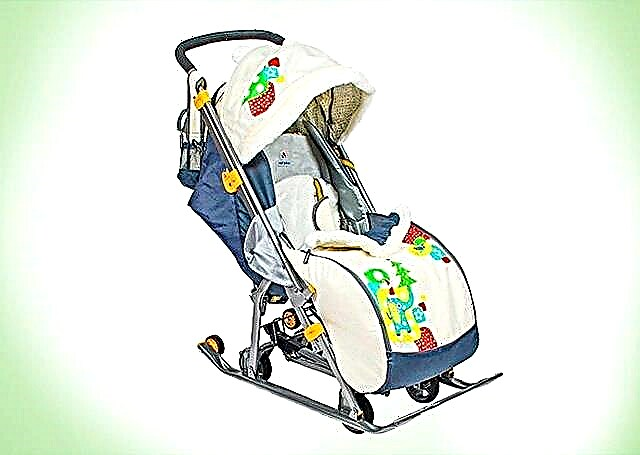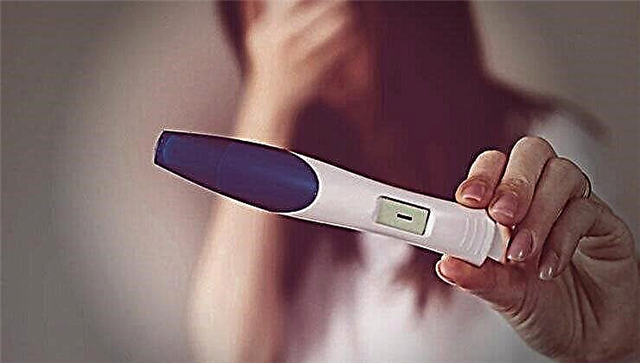Briefly about the rhythm of the heart
The heart is an organ that contracts and pumps blood throughout the body. For it to perform its function effectively, all of its chambers must contract in a certain order and with a certain frequency. This synchronicity of the heart is provided by special cells that generate and distribute excitatory impulses through the heart muscle, they are called the cardiac conduction system.

The impulse originates in the sinus node, which is located in the right atrium, then it spreads to the atria, causing them to contract, is briefly delayed in the atrioventricular node, which is located between the atria and the ventricles, after which it is transmitted through the fiber system to the ventricles, causing them to contract.
The sinus node is able to independently create impulses within itself, and it does so with a certain frequency. This is called sinus rhythm - the rhythm in a healthy human heart.
What is tachycardia?
Tachycardia is a type of arrhythmia, when the heart beats more often than it should be according to the age norm.
It is no secret that in children of different ages, the heart beats at different frequencies and, the younger the baby, the more often his heartbeat will be. Here are the indicative heart rate rates by age:
- newborns - 140 - 160 beats per minute (beats / min);
- 1 year - 120 beats / min;
- 5 years - 100 bpm;
- 12 years old - 80 - 90 beats / min;
- from 15 years old - 60 - 90 beats / min.
Tachycardia in children: what is it like?

To begin with, tachycardia can be divided into two types:
- physiological;
- pathological.
Physiological acceleration of the heartbeat appears normally in all people during physical exertion. This is an adaptive reaction of the heart to an increase in the demand of muscles, lungs and other organs for oxygen and nutrients during their intensive work.
We often notice a rapid heartbeat with excitement, emotional stress or joy, pain and fear. In a stuffy room, with an elevated air temperature or an increase in our body temperature, with fever, with dehydration, tachycardia is an absolutely normal response of the heart to external and internal factors.
When the body temperature rises by 1 ° C, the heart rate increases by 10 beats per minute.
Pathological tachycardia is called if it occurs with the pathology of some organs and systems.
Causes of tachycardia in children

Various diseases can lead to a rapid heartbeat, for convenience they can be divided into:
- intracardiac (that is, caused by heart disease);
- extracardiac (arising from diseases of other organs).
Intracardiac causes include:
- heart defects (congenital and acquired);
- damage to the heart muscle by infectious agents or in autoimmune diseases (myocarditis);
- congenital pathologies of the development of the heart muscle or the cardiac conduction system (for example, Wolff-Parkinson-White syndrome).
Many diseases and conditions can be non-cardiac causes of rapid heart rate:
- diseases of the nervous system, neuroses, neurocirculatory dystonia;
- anemia, significant blood loss;
- hypoxemia (any condition that leads to a decrease in the amount of oxygen in the blood, for example, with lung diseases);
- violation of the ratio of electrolytes in the blood (in particular, potassium deficiency - hypokalemia, magnesium - hypomagnesemia, or, conversely, an excess of potassium - hyperkalemia);
- hypoglycemia - a condition that develops with a deficiency of glucose in the blood;
- violation of the acid-base composition of the blood (namely, acidosis);
- diseases of the thyroid gland, accompanied by an increase in the level of its hormones in the blood - hyperthyroidism;
- the production of an excess amount of adrenaline by an adrenal tumor - pheochromocytoma;
- exposure to certain substances and drugs (caffeine, tobacco, antidepressants, asthma drugs);
- in newborns it is prematurity, birth trauma.
Unlike physiological tachycardia, which is an adaptive response to altered conditions of the external and internal environment, pathological tachycardia can be dangerous for the child's health, since in this case the child's heart throws out less blood into the bloodstream than it should and what the body needs, and therefore such tachycardia requires attention of doctors to find its cause.
In addition, tachycardia is divided according to where the impulse comes from.
- Sinus tachycardia is when the pulse that causes the heart to beat comes, as usual, from the sinus node, but is generated by it with an increased frequency.
This type of tachycardia is characterized by a gradual onset, the achievement of a high heart rate and a gradual decrease in heart rate with a return to the age norm.
- Ectopic (paroxysmal) tachycardia - the impulse does not come from the sinus node. Any part of the cardiac conduction system becomes an impulse generator. It can be located in the atria (then the tachycardia will be called supraventricular or supraventricular), or in the ventricles (ventricular or ventricular tachycardia).
Paroxysmal tachycardia in babies occurs in the form of seizures (paroxysms), which in most cases occur suddenly. Paroxysms can last from a few minutes to several days, causing severe inconvenience to the child and even leading to serious consequences for the whole organism, up to life-threatening conditions.
The most dangerous type of tachycardia is ventricular. Although not common in children, it is a life-threatening condition that leads to a sharp and pronounced deterioration in the child's well-being and requires urgent medical attention.
How to identify tachycardia in a baby?
The symptoms of tachycardia and their severity vary quite a bit depending on its type and duration. The child may experience:
- a feeling of palpitations, just vague discomfort in the region of the heart;
- shortness of breath, feeling short of breath;
- pallor, and in severe cases, blue skin;
- weakness, the child begins to tire quickly, in newborns sluggish sucking may be observed;
- dizziness, nausea;
- emotional excitement, anxiety, crying;
- sweating;
- fainting, loss of consciousness.
Moderate tachycardia in a child may well not manifest itself in any way, the baby simply will not feel his rapidly beating heart.
It is also important to remember that the symptoms of tachycardia can be combined with other manifestations of the underlying disease, which is the cause of the tachycardia. For example, with myocardial damage due to myocarditis, the appearance of tachycardia will be preceded by a period of fever, and the tachycardia itself will be accompanied by manifestations of heart failure: swelling of the legs, blue lips and fingertips, severe shortness of breath, and so on.
Diagnostics for tachycardia in children
So, you suspected or identified tachycardia on your own in your baby. What are the next steps?
In this case, you must strictly contact your pediatrician. Its task will be to identify tachycardia and to find its cause. The whole difficulty in this case is that if it turns out to be paroxysmal tachycardia, its second attack may not happen at the time of your communication with the doctor.

What methods do a pediatrician or pediatric cardiologist usually resort to?
- First of all, this is an ECG (electrocardiography). Sometimes this study is already enough to determine the type of tachycardia and get closer to its cause, seeing on the film, for example, signs of heart failure.
- Daily (or Holter) ECG monitoring is an indispensable method for detecting and studying paroxysmal tachycardia in a child. For this study, special electrodes are attached to the baby's skin and a compact device in a handy bag is issued, which continuously records the electrical activity of the heart (that is, constantly records an ECG) throughout the day. Sometimes it takes more than one day to detect paroxysm. The device will register any rhythm disturbances that the baby may have.
- Echo-KG (or ultrasound of the heart). Using this method, the doctor evaluates the structure of the heart and can see a violation of the structure of the myocardium (heart muscle), heart valves and its large vessels. Thus, one can see congenital or acquired heart defects, evaluate the volume of the heart chambers, the thickness of its walls and the contractile function.
- A general blood test, which can identify anemia as one of the possible causes of tachycardia.
- Biochemical blood test with a mandatory assessment of the electrolyte composition of the blood (potassium, sodium, calcium and magnesium content), glucose levels.
- A blood test for the content of thyroid hormones.
- Electroencephalography.
- MRI of the heart (rarely used).
- EFI - electrophysiological examination of the heart, which allows you to study in detail its electrical activity and find an ectopic pulse generator in paroxysmal tachycardia.
Treatment of tachycardia in children
Only after searching for and identifying the cause of the arrhythmia can we begin to treat it.
Tachycardia is treated by a cardiologist in conjunction with other specialists (for example, with a neurologist, endocrinologist, depending on the true cause of arrhythmia). If you have identified tachycardia in your baby on your own, but have not yet reached the doctor, you should protect the child from caffeine-containing products (coffee, tea, chocolate), stress and experiences that can provoke paroxysm.
Physiological tachycardia does not require treatment.

The doctor selects the therapy that is suitable for your case for the treatment of the underlying disease, due to which the tachycardia appeared.
For example, if the heart palpitations are caused by thyrotoxicosis, the endocrinologist will prescribe drugs that inhibit the thyroid gland (propylthiouracil, methimazole).
If tachycardia is caused by a pathology of the nervous system (neurogenic), it is treated by a neurologist, who can prescribe sedatives, sedatives.
A pediatric cardiologist is involved in the treatment of tachycardia caused by heart disease and heart failure.
Due to the variety of heart diseases, the approach to their treatment can vary. For example, with myocarditis caused by an infection, the doctor resorts to treatment with antimicrobial drugs, NSAIDs. If myocarditis is caused by an autoimmune disease, it is treated with glucocorticosteroids and cytostatics.
For the treatment of heart failure, which can lead to all these diseases, beta-blockers are used, which straighten the heart rate, drugs from the group of angiotensin-converting enzyme inhibitors that have a cardioprotective effect, and, if necessary, cardiac glycosides (Digoxin).
Sometimes for the relief and treatment of tachycardia, special antiarrhythmic drugs are used, such as Cordaron, Propranolol.
Emergency care for tachycardia
If a child suddenly has complaints that make you suspect he has an attack of tachycardia (it is easy to determine by putting your hand on the baby's chest or feeling the carotid artery), and you do not see the obvious reason that caused it (for example, jogging, fright, swaddling, etc.) further), the first thing you should do is call an ambulance.
While you wait for the brigade to arrive, there are several ways to help you relieve your baby. They are good because: firstly, they do not require special skills, and secondly, they are harmless even if you made a mistake with the diagnosis.
The first thing to do is try to calm the baby down, because arousal itself can aggravate tachycardia. Provide a supply of fresh air - for example, open a window.
Then apply one of these techniques or each of them in sequence.
- Wipe your baby's face with cold water or place a cold, wet towel on your face.
- Ask your child to close their eyes and press down on their eyeballs with moderate force for a few seconds. This will trigger the so-called Danigni-Ashner reflex (normally present in all people), which will lead to a slowdown in the heart rate.
- The child tightly closes his nose and mouth (you can use his hands) and strains well, as if he wants to exhale. This is the so-called Valsalva test.
- Massage your carotid sinus. The carotid sinus is the place where the common carotid artery divides into two branches - the internal and external carotid arteries. This location is approximately at the level of the baby's thyroid cartilage on either side of the neck. To find it, feel the thyroid cartilage (what is called the Adam's apple in adult men) and slide your fingers off it - you will feel the pulsation of the carotid artery. Press down on this area and massage for a few minutes.



